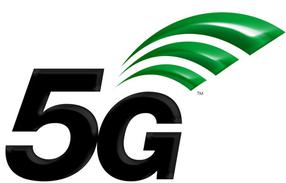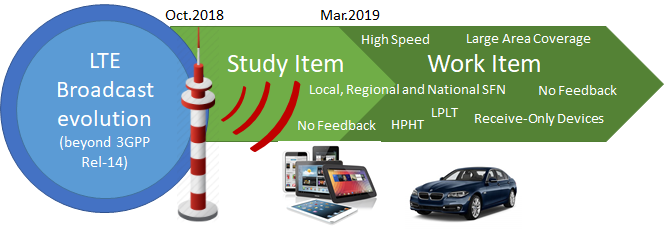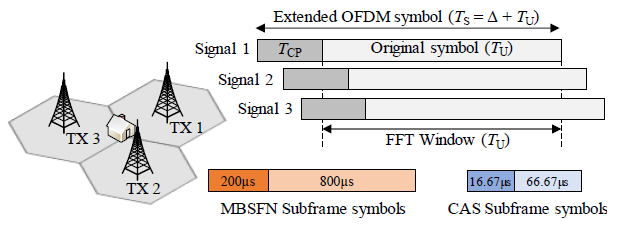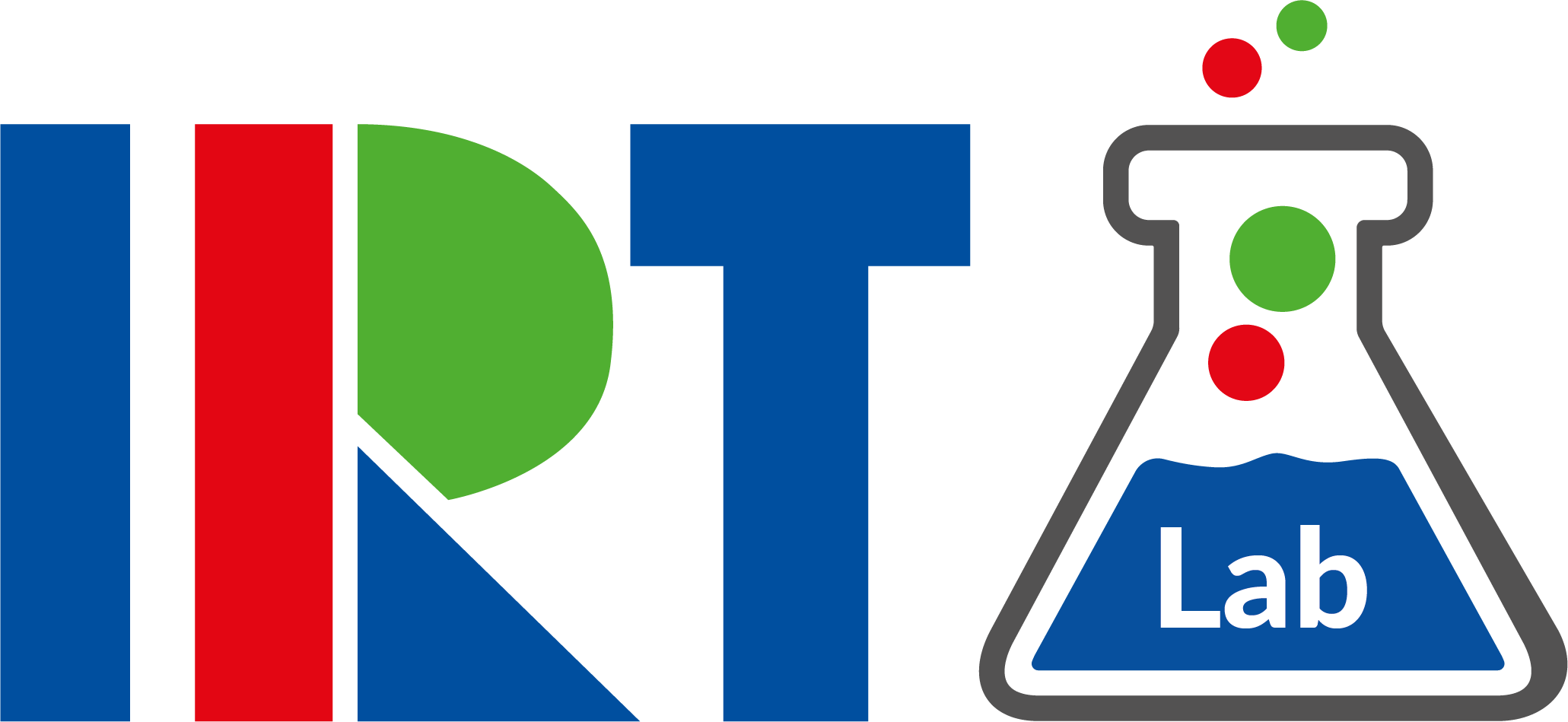IRT continues contributing to 3GPP to enhance 5G Broadcast together with the EBU, BBC and a growing number of supporters such as ABS, Bittium, BMWi, British Telecom, Cellnex, CHTTL, Dish, ESA, Enensys, Fraunhofer, Nomor, Nokia, One2Many, Qualcomm, Rohde & Schwarz, Samsung, SJTU, Telstra, UPV/EHU, among others.
After our last report (see: https://lab.irt.de/irt-contributes-to-the-studies-in-3gpp-to-enhance-5g-broadcast/) it has rained (and snowed) a lot here in Munich. So we had some quality time in our labs to progress on 5G Broadcast. Let us give you an update on a topic which sees a lot of attention these days … but before, perhaps, we can clarify a few things as we have detected a bit of misunderstanding about what 5G Broadcast currently is.
5G Broadcast? What are we talking about?

The lines between 4G (also known as LTE) and 5G are sometimes blurrier than the names might suggest. As with steady evolution from 3G to 4G, there are a lot of intermediate steps. The key to success often was – and remains to be – the integration of technologies from different specifications – quite invisible to the consumer. As such, the first generation of 5G market deployments will rely on a smooth evolution from 4G/LTE-based technologies together with what’s called 5G New Radio (NR), NG-RAN or 5GC (Core). So, when today we are saying “5G Broadcast” we refer to something that is also known as FeMBMS/EnTV and more recently as “LTE-based 5G Terrestrial Broadcast”. Yes, unfortunately three or four different names to designate exactly the same technology.
5G Broadcast is a technology that, based on a mix of 3GPP specifications, is able to deliver linear TV and radio services from one or multiple transmitters to an infinite number of receivers without the need for a sim-card or even any uplink capabilities. It permits, for the first time, to tune audiovisual services on the phone without depending on other standards and chipsets than the one already integrated in all smartphones. That’s a big achievement for broadcasters as, in addition, 5G Broadcast can be operated on a broadcast infrastructure and can be received without being linked to a particular operator (the signal is offered free-to-air, or better said, free-to-tune, without a contract and the corresponding sim-card).
Important!!! When we talk about “5G Broadcast” we are not talking about mmWave, dozens of GHz, nothing about 20 Gbps data rate, eMB, ULRRC,… It also is completely independent from any unicast implementation. Even more, at this point in time, 5G Broadcast is even completely independent from any 5G-NR (New Radio) or 5G-Core specification (what in unicast is called simply 5G). The latter might well change in the future though. Bear with us.
What are we doing in 3GPP? What is the Status?

As a brief reminder, a study item was approved in June 2018 (RAN#80) in order to evaluate how requirements for broadcasting were already met or not by the Release 14 specification. Two of the requirements were quite challenging:
Req.7 The new RAT shall make it possible to cover large geographical areas up to the size of an entire country in SFN mode with network synchronization and shall allow cell radii of up to 100 km if required to facilitate that objective. It shall also support local, regional and national broadcast areas.
Req.8 The new RAT shall support Multicast/Broadcast services for fixed, portable and mobile UEs. Mobility up to 250 km/h shall be supported.
The study item phase has concluded (see the report: Study on LTE-based 5G terrestrial broadcast) and we have been successful in showing that changes in Rel14 are necessary in order to support two main features:
- the efficient integration of HPHT (high-power high-tower) broadcast infrastructure for large area SFN coverage, targeting roof-top reception.
- high speed reception from medium-scale SFN areas, which may become relevant to provide broadcast services to car-mounted receivers or even high speed trains.
With the work done, a new Work Item has been stablished to standardize solutions (WID proposal for LTE-based 5G terrestrial broadcast). While “Study Items” are typically launched to evaluate the support form specific use cases and to assess how requirements are met or not, “Work Items” are created (based on Study Item outcomes) to contribute to the actual specifications in 3GPP.
We have first started with the evaluation of the CAS (R1-1905330). CAS stands for cell acquisition subframe and already in 2017 (see D3.2 of 5G-Xcast,) we realized that these control channels (where the signaling information to be able to demodulate the actual data is located) and the data channels use different numerologies (basically different cyclic prefixes) and therefore may present different robustness to multipath In brief, this makes that potential receiver locations where coverage for the data signal should be fine are finally not covered as there is no way to demodulate it (the control channels cannot be received). This is a fundamental design issue that we are trying to solve. In our paper (Link) we already anticipated the problem. Even more, at that time we only published results for roof-top reception as any other regarding portable reception would have been fundamentally incorrect without paying attention to the way wanted and unwanted signals, and FFT windows are considered, as we did in one of our recent inputs to 3GPP.

In the last RAN1 Meeting (RAN1#97 in Reno, US) we have focused on the dependence of the reception of the CAS with respect to time variations in the received and interfering signals as well as whether the CAS can operate or not in SFN mode (as the rest of data does). Another contribution evaluates the spectral efficiency of new numerologies for large are SFN support.
We are still participating in 3GPP standardization. Keep an eye on us for further updates.
Acknowledgement
This work is supported in part by the European Commission under the 5GPPP project 5G-Xcast (H2020-ICT-2016-2 call, grant number 761498). Follow www.5g-xcast.eu
Keep informed about our activities in 5G at lab.irt.de
Do you want to go deeper on the details?
This is the list of EBU/BBC/IRT submissions to 3GPP RAN1 where you can find all the necessary information about our work:
RAN1#94bis (Chengu, China):
• R1-1810319 – Public service broadcaster requirements and background information relevant to LTE-based 5G Terrestrial Broadcast
• R1-1811588 – Scenarios and simulation assumptions for the LTE based terrestrial broadcast gap analysis
RAN1#95 (Spokane, US):
• R1-1812430 – Evaluation Results for LTE-Based 5G Terrestrial Broadcasting
RAN1#96 (Athens, Greece):
• R1-1903284 – Evaluation Results for LTE-Based 5G Terrestrial Broadcasting
RAN1#96bis (Xi’an, China):
• R1-1905330 – Network Simulations Regarding the Performance of the CAS
• R1-1905331 – Information For Time Variation Models
RAN1#97 (Reno, US):
• R1-1906634 – Network Simulations Incorporating Time Variation for the CAS
• R1-1907093 – Spectral Efficiency of New Numerologies for Rooftop Reception

